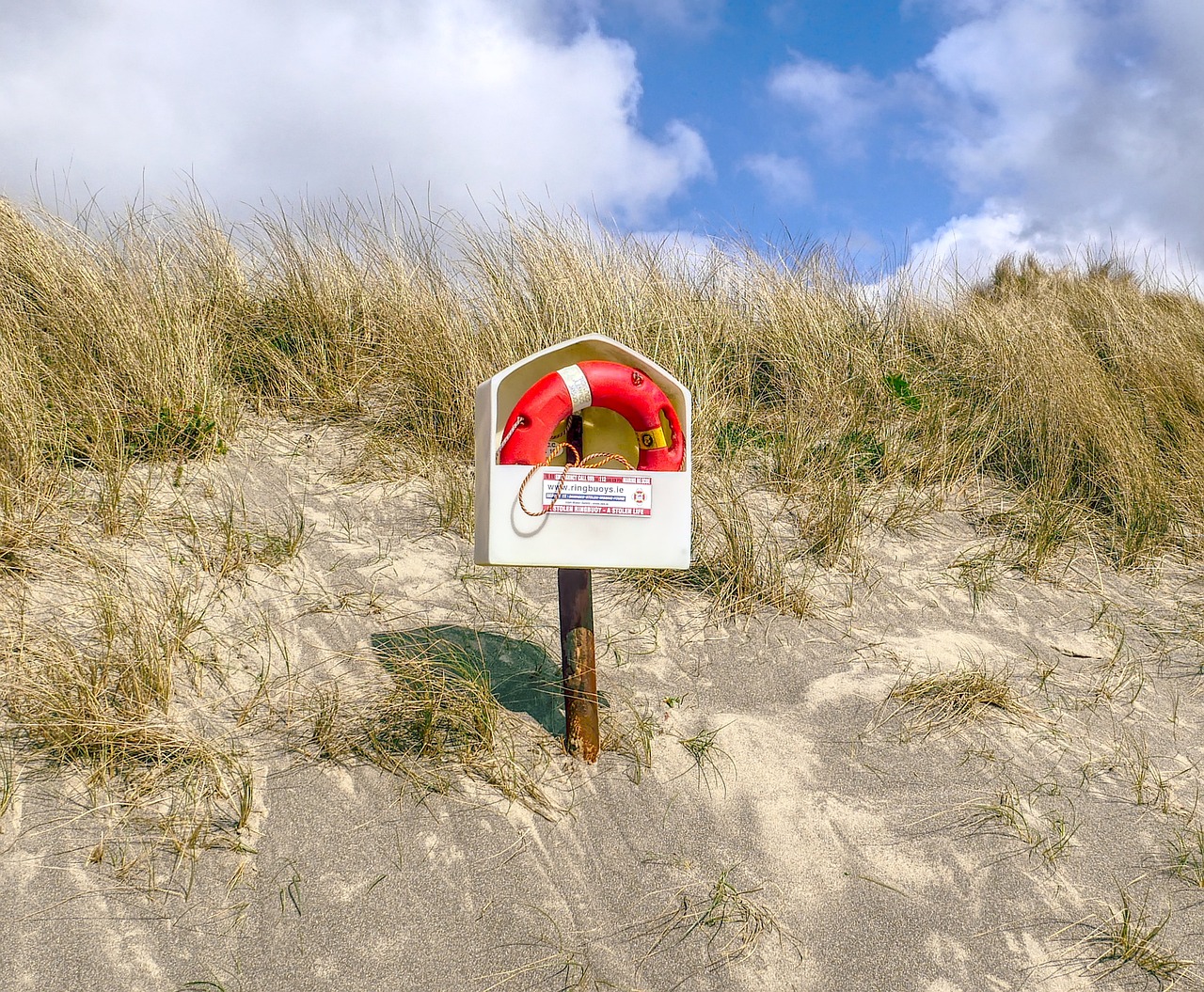Internet Safety for Seniors: Tips and Tricks
In today's digital age, the internet is an invaluable resource, offering everything from entertainment to essential services. However, navigating this vast online world can be daunting, especially for seniors who may not have grown up with technology. The good news is that with a little knowledge and awareness, seniors can protect themselves and enjoy all the benefits the internet has to offer. This article provides essential tips and tricks for seniors to navigate the online world safely, empowering them to protect their personal information and enjoy the benefits of the internet without fear.
Before diving into the online realm, it's crucial for seniors to understand the common risks that lurk in cyberspace. The internet is rife with potential threats such as scams, phishing, and malware. Scammers often target seniors due to their perceived lack of tech-savviness, making it essential to recognize these dangers. For instance, phishing involves deceitful emails or messages that appear legitimate, aiming to trick users into revealing personal information. Meanwhile, malware can infect devices, stealing data or causing them to malfunction. By being aware of these risks, seniors can better identify and avoid them, ensuring a safer online experience.
A strong password is the first line of defense against unauthorized access to your accounts. It’s like having a sturdy lock on your front door. A complex password, typically consisting of a mix of letters, numbers, and symbols, can significantly reduce the risk of hacking. Seniors should aim for passwords that are at least 12 characters long and avoid using easily guessed information, such as birthdays or names of family members. To make password management easier, consider using a password manager, which securely stores and generates strong passwords.
Password managers can simplify the process of managing multiple passwords. These tools not only help create strong passwords but also securely store them, so you don’t have to remember every single one. For seniors, this can be a game-changer. Some reliable options include:
- LastPass - User-friendly with a free version available.
- 1Password - Offers excellent security features and an intuitive interface.
- Dashlane - Provides a simple setup and a comprehensive security dashboard.
By using a password manager, seniors can enhance their online security without the hassle of remembering complex passwords.
Two-factor authentication (2FA) adds an extra layer of security to online accounts, acting like a second lock on your door. This process typically involves receiving a code on your phone or email, which you must enter in addition to your password. Enabling 2FA can significantly reduce the risk of unauthorized access, making it a smart choice for seniors who want to keep their accounts secure. Most major platforms, including email services and social media sites, offer this feature, and it’s well worth taking the time to set it up.
Phishing scams are prevalent and can be tricky to spot. Scammers often use urgent language, claiming that immediate action is required, which can lead to hasty decisions. Here are some common tactics:
- Emails that ask for personal information or passwords.
- Links that lead to sites that look legitimate but are designed to steal information.
- Attachments that may contain malware.
By being vigilant and questioning the legitimacy of unexpected messages, seniors can protect themselves from falling victim to these scams.
Practicing safe browsing habits is essential for online security. Seniors should always ensure that they are visiting secure websites, identifiable by the “https” at the beginning of the URL. Additionally, it’s wise to avoid clicking on suspicious links or ads, as these can lead to harmful sites. Using an ad blocker can also help minimize exposure to potentially dangerous content. By following these guidelines, seniors can enjoy a safer online experience while surfing the web.
Social media can be a fun way to connect with family and friends, but it also poses risks. It’s important for seniors to be aware of privacy settings, friend requests, and safe sharing practices. For instance, adjusting privacy settings can help control who sees your posts and personal information. Seniors should regularly review their friend lists and be cautious about accepting requests from unknown individuals, as they could be fake profiles or scammers.
Navigating privacy settings can be overwhelming. However, taking the time to adjust these settings can significantly enhance online safety. Most social media platforms allow users to customize their privacy settings, enabling them to control who can see their posts and personal information. Seniors should familiarize themselves with these options to ensure their information remains private and secure.
Fake profiles are a common issue on social media platforms. These accounts can be used for scams or to spread misinformation. Seniors should look for signs such as:
- Profiles with few friends or posts.
- Generic profile pictures or stock images.
- Unusual messages or requests for personal information.
If something seems off, it’s best to err on the side of caution and report the account to the platform.
Q: What should I do if I think I've been scammed?
A: If you suspect you've been scammed, immediately change your passwords, enable two-factor authentication, and report the incident to your bank and local authorities.
Q: How can I tell if an email is a phishing attempt?
A: Look for poor spelling and grammar, check the sender's email address, and be cautious of links that don't match the website they claim to lead to.
Q: Are there any tools to help me stay safe online?
A: Yes! Consider using antivirus software, password managers, and ad blockers to enhance your online safety.

Understanding Online Risks
As we dive into the vast ocean of the internet, it’s crucial for seniors to be aware of the treacherous waters that lurk beneath the surface. The online world, while filled with opportunities for connection and learning, is also home to various risks that can catch even the savviest users off guard. From scams and phishing attempts to the ever-looming threat of malware, understanding these dangers is the first step toward safe navigation.
So, what exactly are these risks? Let’s break them down:
- Scams: These can come in many forms, such as fake lottery winnings, fraudulent charities, or even romance scams that prey on emotional vulnerabilities. Scammers often use persuasive tactics to lure victims into providing personal information or financial details.
- Phishing: This is a deceptive practice where attackers impersonate legitimate organizations via email, text, or social media to trick individuals into revealing sensitive information. A common tactic involves sending a message that appears to be from a trusted source, urging the recipient to click on a link that leads to a fake website.
- Malware: Short for malicious software, malware is designed to infiltrate and damage computers or networks. This can include viruses, trojans, and spyware that can steal personal information or cause significant harm to devices.
But how can seniors identify and avoid these online threats? The key lies in awareness and education. Recognizing the signs of a scam or phishing attempt can be as simple as asking a few critical questions:
- Does the message contain urgent language or pressure to act quickly?
- Is the sender's email address legitimate or does it look suspicious?
- Are there any grammatical errors or awkward phrases that make the message seem unprofessional?
By being vigilant and adopting a skeptical mindset, seniors can significantly reduce their chances of falling victim to these online risks. It’s essential to take the time to educate oneself about the latest scams and tactics used by cybercriminals. Regularly updating knowledge about online safety can make all the difference.
In conclusion, while the internet can be a fantastic resource for seniors, it's vital to remain aware of the potential dangers that exist. By understanding these risks and implementing protective measures, seniors can enjoy the benefits of the online world without fear. Remember, staying informed and cautious is key to a safe and enjoyable online experience.

Creating Strong Passwords
When it comes to online security, creating strong passwords is akin to locking your front door with a heavy-duty lock. It’s your first line of defense against unauthorized access to your personal information. Many seniors might think that using their pet's name or their birthdate is sufficient, but in reality, these types of passwords are as secure as a paper umbrella in a rainstorm. A strong password should be a mix of letters, numbers, and special characters, ideally at least 12 characters long. This complexity makes it significantly harder for hackers to crack your password.
So, how do you create a strong password? Here are some essential tips to keep in mind:
- Avoid Common Words: Stay away from easily guessable words or phrases, such as "password," "123456," or any personal information.
- Use a Passphrase: Consider using a sentence or a phrase that you can easily remember but is hard for others to guess, like "MyDogLovesToPlayFetch!"
- Mix It Up: Combine uppercase and lowercase letters, numbers, and special characters. For example, "B3autifulD@y!" is much stronger than "beautifulday."
Managing multiple strong passwords can be a daunting task, especially for seniors who may not be tech-savvy. This is where password managers come into play. These tools can securely store all your passwords in one place, allowing you to access them easily without the need to remember each one. Think of a password manager as your personal vault: it keeps your treasures safe while letting you access them whenever you need.
Password managers are designed to simplify your online life. They can generate strong passwords for you, fill them in automatically, and even alert you if any of your passwords have been compromised. Some popular options that cater specifically to seniors include:
| Password Manager | Features |
|---|---|
| LastPass | User-friendly interface, password generator, and secure sharing options. |
| 1Password | Family sharing plans, travel mode for secure access, and strong encryption. |
| Dashlane | Dark web monitoring and automatic password changes for supported sites. |
By using a password manager, seniors can ensure that they are not only creating strong passwords but also managing them effectively without the stress of forgetting them.
Another layer of security that seniors should consider is two-factor authentication (2FA). This method requires not just a password but also a second form of verification, such as a text message or an app notification. It’s like having a second lock on your door; even if someone manages to get your password, they still need that second key to enter. Enabling 2FA on important accounts like email or banking can significantly enhance your online safety.
Even with strong passwords, seniors need to be vigilant against phishing attempts. These scams often come in the form of emails or messages that look legitimate but are designed to steal your personal information. Common tactics include urgent requests for account verification or alerts about suspicious activity. Always remember, if something feels off, it probably is. Look for signs like poor grammar, generic greetings, or unfamiliar sender addresses. When in doubt, it’s best to contact the organization directly through official channels.
In conclusion, creating strong passwords is essential for maintaining online security. By following these guidelines, using password managers, enabling two-factor authentication, and staying alert to phishing attempts, seniors can enjoy the benefits of the internet while keeping their personal information safe from harm.

Using Password Managers
In today's digital age, keeping track of multiple online accounts can feel like trying to juggle flaming torches—challenging and a bit dangerous! That's where password managers come into play. These handy tools are designed to help you store and manage your passwords securely, making your online experience much smoother and safer. Imagine having a personal vault that remembers all your passwords for you, so you can focus on enjoying the internet instead of stressing over forgotten logins.
So, how do password managers work? Essentially, they encrypt your passwords and store them in a secure location. When you need to log in to a site, the password manager automatically fills in your credentials, saving you the hassle of remembering complex combinations of letters, numbers, and symbols. Most password managers also offer features like password generation, which helps create strong, unique passwords for each of your accounts. This is crucial because using the same password across multiple sites is like leaving the front door wide open for intruders!
Now, you might be wondering, "Are there any password managers that are particularly good for seniors?" The answer is yes! Many password managers are user-friendly and designed with simplicity in mind. Here are a few options that cater specifically to seniors:
| Password Manager | Key Features | Price |
|---|---|---|
| LastPass | Easy to use, password generation, secure sharing | Free with premium options |
| 1Password | User-friendly interface, travel mode, family sharing | Monthly subscription |
| Dashlane | Dark web monitoring, password health reports | Free with premium options |
Using a password manager not only simplifies your online life but also enhances your overall security. By generating unique passwords for each site, you significantly reduce the risk of being hacked. It's like having a personal bodyguard for your online identity!
However, it's essential to choose a password manager that fits your needs. Look for one that offers a straightforward setup process and customer support, just in case you need a little extra help. Remember, the goal is to make your online experience as secure and enjoyable as possible.
In conclusion, incorporating a password manager into your digital routine is a smart move for any senior looking to navigate the online world with ease. With the right tool, you can keep your personal information safe and enjoy everything the internet has to offer without the constant worry of forgetting a password or falling victim to cyber threats.

Benefits of Two-Factor Authentication
Two-factor authentication (2FA) is like having a sturdy lock on your front door, but with an extra security measure that makes it even tougher for unwanted visitors to get in. For seniors navigating the online world, enabling 2FA is a vital step in protecting personal information and accounts from unauthorized access. Imagine having a key and a secret code to enter your house; it’s a similar concept with 2FA. When you log into your accounts, not only do you need your password, but you also have to provide a second piece of information, often a code sent to your phone or generated by an app.
So, why should seniors embrace this extra layer of security? Here are some compelling reasons:
- Enhanced Security: By requiring two forms of identification, 2FA significantly reduces the risk of unauthorized access. Even if someone manages to steal your password, they would still need that second factor to gain entry.
- Peace of Mind: Knowing that your accounts are better protected can alleviate anxiety about online scams and identity theft, allowing you to enjoy the internet more freely.
- Simple to Use: Many 2FA systems are user-friendly. Whether it’s receiving a text message or using an authentication app, the process is straightforward and doesn’t require advanced tech skills.
Moreover, many popular services and platforms, such as email providers and social media networks, now offer 2FA as a standard security feature. This means that implementing it is not only beneficial but also increasingly accessible. By taking this proactive step, seniors can significantly enhance their online security and enjoy a safer internet experience.
In conclusion, enabling two-factor authentication is a simple yet effective way for seniors to protect their online accounts. It’s like having a safety net; even if you slip, you won’t fall too far. As technology continues to evolve, so do the methods that cybercriminals use to exploit vulnerabilities. Thus, staying one step ahead with tools like 2FA is essential in this digital age.
As we wrap up our discussion on two-factor authentication and online safety, let's address some common questions seniors might have:
- What is two-factor authentication?
Two-factor authentication is a security process that requires two different forms of identification before granting access to an account. - How do I set up two-factor authentication?
Most online services have an option in their security settings where you can enable 2FA. Follow the prompts to link your phone or authentication app. - Is two-factor authentication safe?
Yes, 2FA is a highly recommended security measure that adds an additional layer of protection to your accounts.

Recognizing Phishing Attempts
In today's digital age, phishing attempts have become increasingly sophisticated, making it essential for seniors to be vigilant. Phishing is a deceptive tactic used by cybercriminals to trick individuals into divulging personal information, such as passwords or credit card numbers. These scams can come in various forms, including emails, text messages, and even phone calls. So, how can you tell if something is a phishing attempt? Here are some key indicators to watch out for:
- Generic Greetings: Phishing emails often begin with a generic greeting like "Dear Customer" instead of your name. Legitimate companies usually address you by your name.
- Urgent Language: Be wary of messages that create a sense of urgency, such as "Your account will be suspended unless you act now!" This tactic is designed to provoke a hasty response.
- Suspicious Links: Hover over any links before clicking. If the URL looks strange or doesn’t match the company’s official website, it’s likely a phishing attempt.
- Unusual Sender Address: Check the sender's email address carefully. Phishers often use addresses that look similar to legitimate ones but may have slight variations, such as extra letters or numbers.
- Attachments: Be cautious of unexpected attachments. Phishing emails may include malicious files that can infect your device with malware.
Recognizing these signs can significantly reduce the risk of falling victim to phishing scams. If you receive a suspicious email or message, it's best to verify the sender by contacting the company directly using contact information from their official website. Never reply to the email or click on any links within it.
Additionally, it’s a good idea to keep your software and antivirus programs up to date. Many security systems now include features that can help detect and block phishing attempts before they reach your inbox. By staying informed and cautious, seniors can navigate the online world more safely and enjoy the many benefits it offers without unnecessary fear.

Safe Browsing Practices
When it comes to , seniors must adopt a proactive approach to protect themselves from online threats. The internet can be a vast ocean filled with both treasures and dangers, and navigating it safely is crucial. One of the first steps in ensuring a safe online experience is to be cautious about the websites you visit. Always look for secure connections; you can identify them by checking for "https://" at the beginning of the URL. The "s" stands for secure, which means the site encrypts your data, making it harder for cybercriminals to access your information.
Another essential practice is to avoid clicking on suspicious links. Whether they come from emails, social media, or even text messages, if something seems off, it probably is. Cybercriminals often use enticing offers or urgent messages to trick users into clicking on malicious links. A good rule of thumb is to think before you click. If an email claims you've won a prize, take a moment to verify the sender's address and look for signs of phishing.
Moreover, keeping your browser and software updated is a vital part of safe browsing. Software developers frequently release updates that patch security vulnerabilities. By ensuring your browser is up-to-date, you significantly reduce the risk of being exploited by malware. It’s like having a sturdy lock on your door; the more secure your software, the less likely intruders will find a way in.
To further enhance your browsing security, consider using ad blockers and anti-virus software. Ad blockers can prevent malicious ads from appearing on your screen, while anti-virus software will scan for and eliminate potential threats before they can do any harm. It's like having a security guard watching over your online activities.
Lastly, be mindful of the information you share online. Oversharing personal details can make you a target for identity theft or fraud. Always think twice before posting anything that could be used against you, such as your full name, address, or phone number. Remember, the internet is a public space, and once something is posted, it can be challenging to take it back.
By following these safe browsing practices, seniors can enjoy the benefits of the internet while minimizing risks. Always stay alert, and don’t hesitate to ask for help if you’re unsure about something. The online world can be intimidating, but with a bit of caution and knowledge, you can navigate it safely and confidently.
- What should I do if I accidentally clicked on a suspicious link? Immediately close the browser window, run a virus scan, and change your passwords as a precaution.
- How can I tell if a website is secure? Look for "https://" in the URL and a padlock icon next to it in the address bar.
- Is it safe to use public Wi-Fi? Public Wi-Fi can be risky. Avoid accessing sensitive information like bank accounts while on public networks.
- What is phishing? Phishing is a fraudulent attempt to obtain sensitive information by disguising as a trustworthy entity in electronic communications.

Social Media Safety
Social media platforms are like bustling town squares, where people gather to share stories, photos, and experiences. For seniors, these platforms can be a delightful way to connect with family and friends, but they also come with their own set of risks. It’s crucial to navigate these digital spaces with caution and awareness, ensuring that personal information remains protected while enjoying the benefits of online interaction. So, how can seniors ensure they are safe while engaging on social media?
First and foremost, understanding privacy settings is essential. Many seniors may find these settings a bit daunting, but they are like the locks on your front door—necessary for keeping unwanted visitors out. Each social media platform has different privacy options, and knowing how to adjust these settings can significantly reduce the likelihood of personal information being exposed. For example, Facebook allows users to limit who can see their posts, while Instagram offers options to make accounts private. Taking the time to explore these settings can make a world of difference.
Another critical aspect to consider is friend requests. It can be tempting to accept every request that comes your way, especially from people who seem familiar or share mutual friends. However, it’s essential to be discerning. Just like you wouldn’t invite a stranger into your home, you shouldn’t invite unknown individuals into your online space. If a friend request seems suspicious or comes from someone you don’t recognize, it’s perfectly acceptable to ignore or block that request. Remember, it’s better to be safe than sorry!
When it comes to sharing information, seniors should adopt a cautious approach. While it’s fun to share photos from family gatherings or exciting trips, it’s wise to think twice before posting sensitive details, such as your home address or phone number. Consider this analogy: would you announce your vacation plans in a crowded room? Probably not! The same principle applies online. Keeping personal information private can help prevent potential threats and scams.
Moreover, seniors should be vigilant about identifying fake profiles. These profiles can be created by scammers looking to exploit unsuspecting users. If someone seems too good to be true, they probably are! Signs of a fake profile can include:
- A lack of personal photos or posts.
- Unusual or generic profile names.
- Requests for money or personal information.
If you encounter a profile that raises red flags, don’t hesitate to report it to the platform. This not only protects you but also helps safeguard other users from potential scams.
In conclusion, while social media can be a fantastic tool for connection, it’s essential for seniors to remain vigilant and informed. By understanding privacy settings, being cautious about friend requests, sharing information wisely, and recognizing fake profiles, seniors can enjoy their online experiences without compromising their safety. So, go ahead, connect with loved ones and share those beautiful moments—just do it with a sprinkle of caution!
1. How can I adjust my privacy settings on social media?
Most platforms have a dedicated section for privacy settings in the account menu. Look for options like “Privacy” or “Security” to customize who can see your posts and personal information.
2. What should I do if I receive a suspicious friend request?
If you don’t recognize the person or if their profile seems suspicious, it’s best to ignore or block the request. Trust your instincts!
3. How can I recognize a fake profile?
Fake profiles often lack personal content, have generic names, and may request sensitive information. If something feels off, it probably is!
4. Is it safe to share photos of family online?
Yes, but be cautious. Avoid sharing personal details like location or identifying information and consider adjusting your privacy settings to limit who can see your posts.
5. What should I do if I suspect I’ve been scammed?
Immediately report the scam to the platform, change your passwords, and consider monitoring your financial accounts for any unauthorized activity.

Understanding Privacy Settings
When it comes to social media, understanding privacy settings is like having a sturdy lock on your front door. You wouldn’t want just anyone wandering into your home, right? Similarly, you want to control who sees your personal information online. Navigating these settings can feel a bit daunting, especially for seniors who might not be as tech-savvy. However, taking the time to adjust your privacy settings can significantly enhance your online safety.
Most social media platforms offer a variety of privacy options that allow you to tailor your online presence. These settings can typically be found under your account settings, often labeled as "Privacy" or "Security." Here’s a quick overview of what you can adjust:
| Privacy Setting | Description |
|---|---|
| Profile Visibility | Choose who can see your profile (public, friends only, or custom). |
| Friend Requests | Control who can send you friend requests (everyone, friends of friends, or no one). |
| Post Visibility | Decide who can see your posts (public, friends, or specific friends). |
| Location Sharing | Turn off location sharing to prevent others from tracking your whereabouts. |
By adjusting these settings, you can ensure that your information is only visible to those you trust. For instance, if you only want your family to see your vacation photos, you can customize your post visibility to exclude the general public. This way, you can share your experiences without the worry of strangers peeking into your life.
Another important aspect of privacy settings is managing your friend requests. It’s vital to only accept requests from people you know personally. Unfortunately, social media is rife with fake profiles created by scammers looking to exploit unsuspecting users. By limiting who can send you friend requests, you significantly reduce the risk of encountering these fraudulent accounts.
In addition to these settings, many platforms allow you to review your existing friends and followers. Regularly checking your friend list can help you identify any suspicious accounts you may want to remove. Remember, it’s always better to be safe than sorry!
Finally, don’t forget to periodically review your privacy settings. Social media platforms frequently update their policies and features, which means your settings could change without you realizing it. By staying proactive and informed, you can enjoy your online experience while keeping your personal information secure.
- How often should I check my privacy settings? It's a good idea to review your privacy settings every few months or whenever there’s a major update to the platform.
- What should I do if I receive a suspicious friend request? Do not accept the request. You can also report the account to the platform for further investigation.
- Can I change my privacy settings at any time? Yes, you can adjust your privacy settings whenever you wish, so feel free to make changes as needed.

Identifying Fake Profiles
In today's digital landscape, the presence of fake profiles on social media is alarmingly common. These phony accounts can range from harmless impersonations to malicious scams aimed at stealing personal information or spreading misinformation. So, how can seniors protect themselves from falling prey to these deceptive profiles? The key lies in being vigilant and knowing what to look for.
First and foremost, pay attention to the profile picture. Often, fake accounts will use stock images or pictures of celebrities instead of real photos. A quick reverse image search can help you determine if the profile picture has been lifted from another source. Additionally, examine the profile's friend list. If the account has a very limited number of friends or an unusually high number of followers without any engagement, this can be a red flag.
Another crucial aspect to consider is the content shared by the profile. Genuine accounts typically share personal updates, photos, and experiences that reflect their life. In contrast, fake profiles often post generic content or share links to suspicious websites. If you notice that a profile is primarily posting promotional content or is overly focused on attracting attention, it may not be legitimate.
Moreover, check for engagement. Real profiles usually have interactions, comments, and likes from friends and family. If a profile seems to be isolated with no interaction, it’s worth questioning its authenticity. Additionally, be cautious of any unsolicited messages asking for personal information or money. Legitimate friends will not pressure you to share sensitive details or send funds.
Here are some common signs of fake profiles to keep in mind:
- Profile has no mutual friends or connections.
- Content seems overly promotional or generic.
- Frequent requests for personal information or money.
- Account was created recently and has little activity.
Finally, if you suspect a profile may be fake, don’t hesitate to report it to the social media platform. Most platforms have a straightforward process for reporting suspicious accounts. Remember, protecting your online safety is paramount, and being proactive about identifying fake profiles is a significant step in safeguarding your personal information.
Q: How can I verify if a profile is real?
A: Look for mutual friends, check the profile's activity, and perform a reverse image search on their profile picture.
Q: What should I do if I encounter a fake profile?
A: Report the profile to the social media platform immediately to help protect yourself and others.
Q: Are fake profiles only found on social media?
A: While they are most common on social media, fake profiles can also appear on dating sites and forums. Always exercise caution.
Q: Can I trust friend requests from people I don’t know?
A: It's best to be cautious. If you don't recognize the person, take time to investigate their profile before accepting the request.
Frequently Asked Questions
- What are the common online risks seniors should be aware of?
Seniors should be aware of various online risks, including scams, phishing attempts, and malware. Scammers often target seniors due to their perceived vulnerability, using tactics like fake emails or phone calls to steal personal information. It's crucial to stay informed and vigilant to avoid falling victim to these dangers.
- How can I create a strong password?
Creating a strong password involves using a mix of upper and lowercase letters, numbers, and special characters. Aim for at least 12 characters and avoid using easily guessable information, such as birthdays or names. Consider using a passphrase, which is a series of random words combined together, to enhance security.
- What is a password manager, and why should I use one?
A password manager is a tool that securely stores and manages your passwords. It can generate complex passwords for you, making it easier to maintain unique passwords for different accounts. This is especially helpful for seniors who may struggle to remember multiple passwords.
- What is two-factor authentication, and how does it help?
Two-factor authentication (2FA) adds an extra layer of security by requiring not just your password but also a second form of verification, like a code sent to your phone. This means that even if someone steals your password, they still can’t access your account without that second factor, greatly enhancing your online security.
- How can I recognize phishing attempts?
Phishing attempts often come in the form of emails or messages that appear to be from legitimate sources but contain suspicious links or requests for personal information. Look for signs such as poor grammar, generic greetings, and urgency in the message. Always verify the sender's email address before clicking on any links.
- What are safe browsing practices I should follow?
To ensure safe browsing, avoid clicking on unknown links, keep your software updated, and use secure websites (look for "https" in the URL). It's also wise to avoid sharing personal information on unfamiliar websites and to use private browsing modes when necessary.
- How can I stay safe on social media?
To stay safe on social media, adjust your privacy settings to limit who can see your posts and personal information. Be cautious about accepting friend requests from strangers and think twice before sharing personal details publicly. Regularly review your friend list and remove any suspicious accounts.
- What should I do if I encounter a fake profile?
If you come across a fake profile, report it to the social media platform. Most platforms have procedures in place to handle such reports. Additionally, avoid engaging with or sharing any information with suspicious accounts to protect yourself.



















